Introduction
In today’s fast-paced urban landscape, where concrete jungles dominate, there is an undeniable yearning for a connection with nature. The bustling city life often leaves us longing for the tranquility that only nature can provide. This disconnect, however, is at odds with our innate human inclination towards the natural world, a phenomenon known as biophilia. Harnessing the profound connection between humans and nature, a groundbreaking approach to design has emerged—biophilic design. This innovative concept strives to seamlessly merge nature with our built environments, promising not only aesthetic enhancement but also fostering well-being, creativity, and sustainable living.
Understanding Biophilic Design
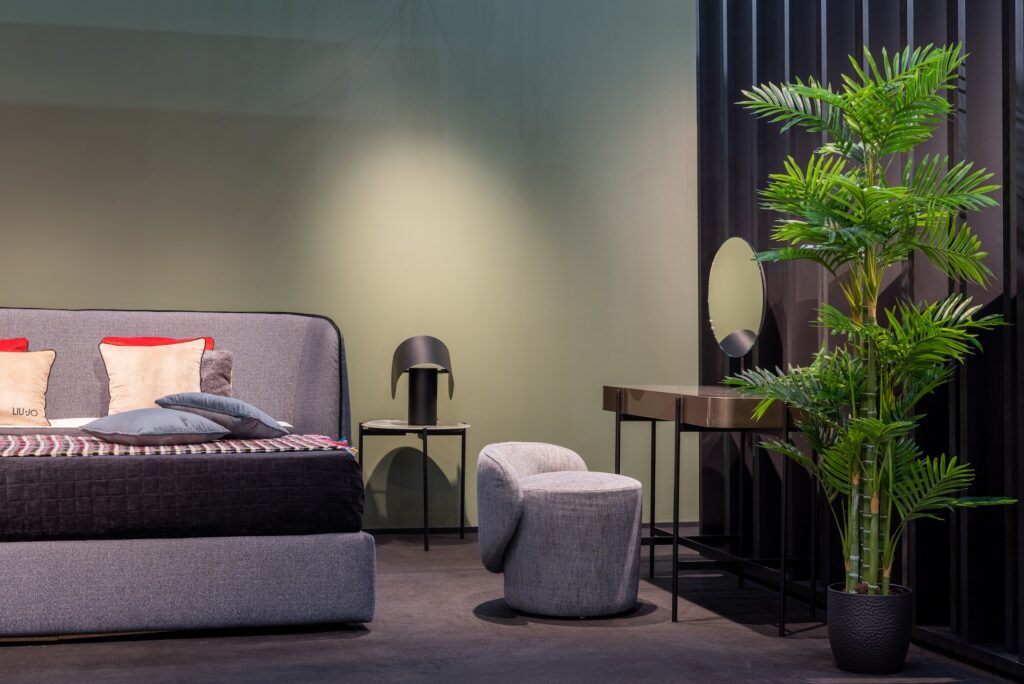
The roots of biophilic design delve deep into the visionary theory of biophilia, introduced by biologist E.O. Wilson. This theory posits that humans possess an inherent attraction to nature due to our evolutionary history. Architects and designers, recognizing the profound implications of this concept, began incorporating its principles into their creations. Biophilic design is a holistic framework that encompasses various strategies to reconnect us with nature. It’s more than just an aesthetic preference it’s a conscious effort to bring the healing touch of nature indoors, rekindling our primordial bond.
Biophilic Design Elements
1. Visual Connection with Nature

Windows, often referred to as the eyes of a building, serve as portals to the world beyond our walls. Biophilic design capitalizes on this by thoughtfully positioning windows to capture scenic outdoor views. These well-placed windows offer a canvas for nature’s artistry to seep into our interiors. Additionally, nature-inspired art and patterns, such as murals depicting forests or waves, infuse the space with a visual reminder of the outdoors. The trend of green walls and vertical gardens takes this connection a step further, transforming interior walls into living, breathing tapestries of greenery.
2. Natural Materials and Textures
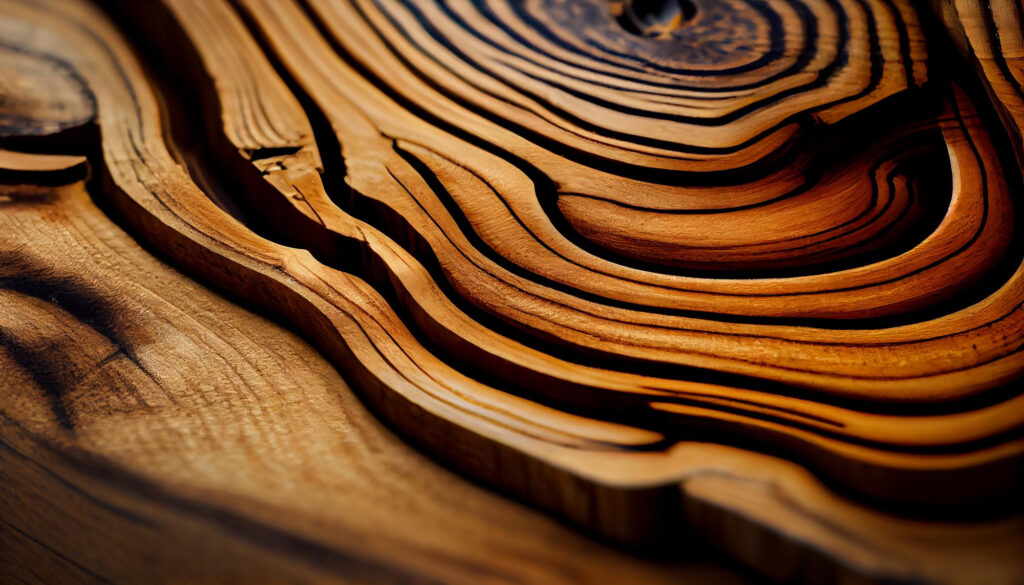
The tactile experience of natural materials lies at the heart of biophilic design. Wood, with its warmth and organic textures, brings an authentic touch of nature indoors. Similarly, stone, with its time-worn ruggedness, connects us to the Earth’s geological history. The beauty of these materials lies not just in their appearance but in the sensory pleasure they provide. In a fascinating twist, technology now enables the replication of these natural textures in innovative materials, offering durability and versatility without compromising the connection to nature.
3. Indoor Greenery and Living Spaces
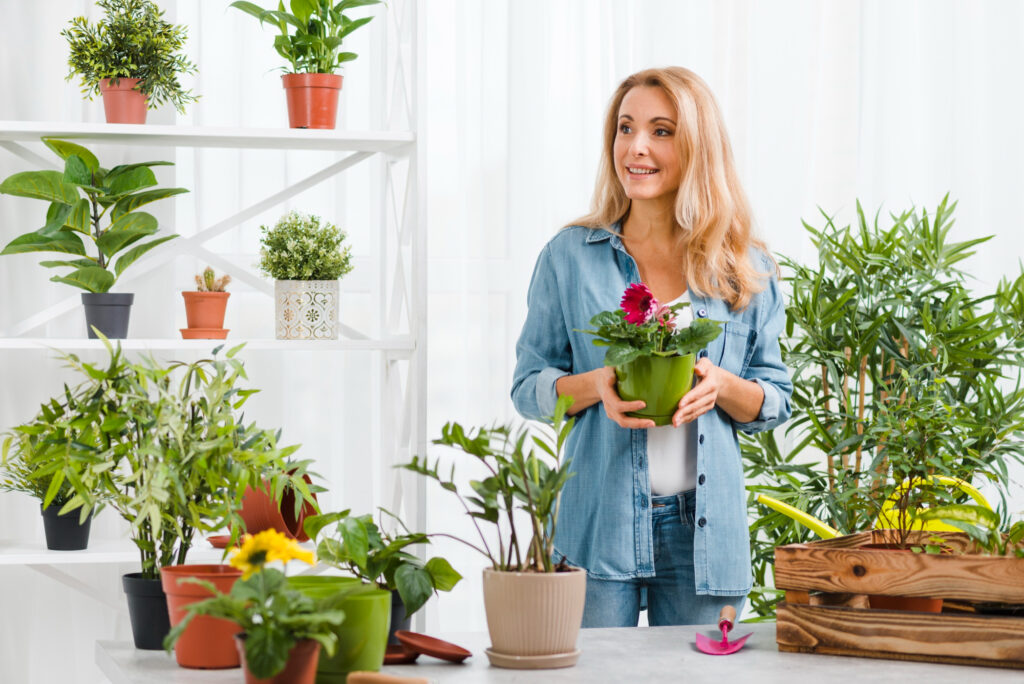
The integration of indoor plants is a hallmark of biophilic design. Beyond aesthetics, indoor plants have been scientifically proven to purify the air, reduce stress, and improve cognitive function. Small potted plants placed on windowsills, hanging planters adorning ceilings, or verdant arrangements on tabletops all serve to invigorate the indoor environment. For larger spaces, the concept of indoor gardens transforms corners into lush sanctuaries, inviting residents and visitors to bask in the serenity of a miniature ecosystem.
4. Organic Shapes and Forms
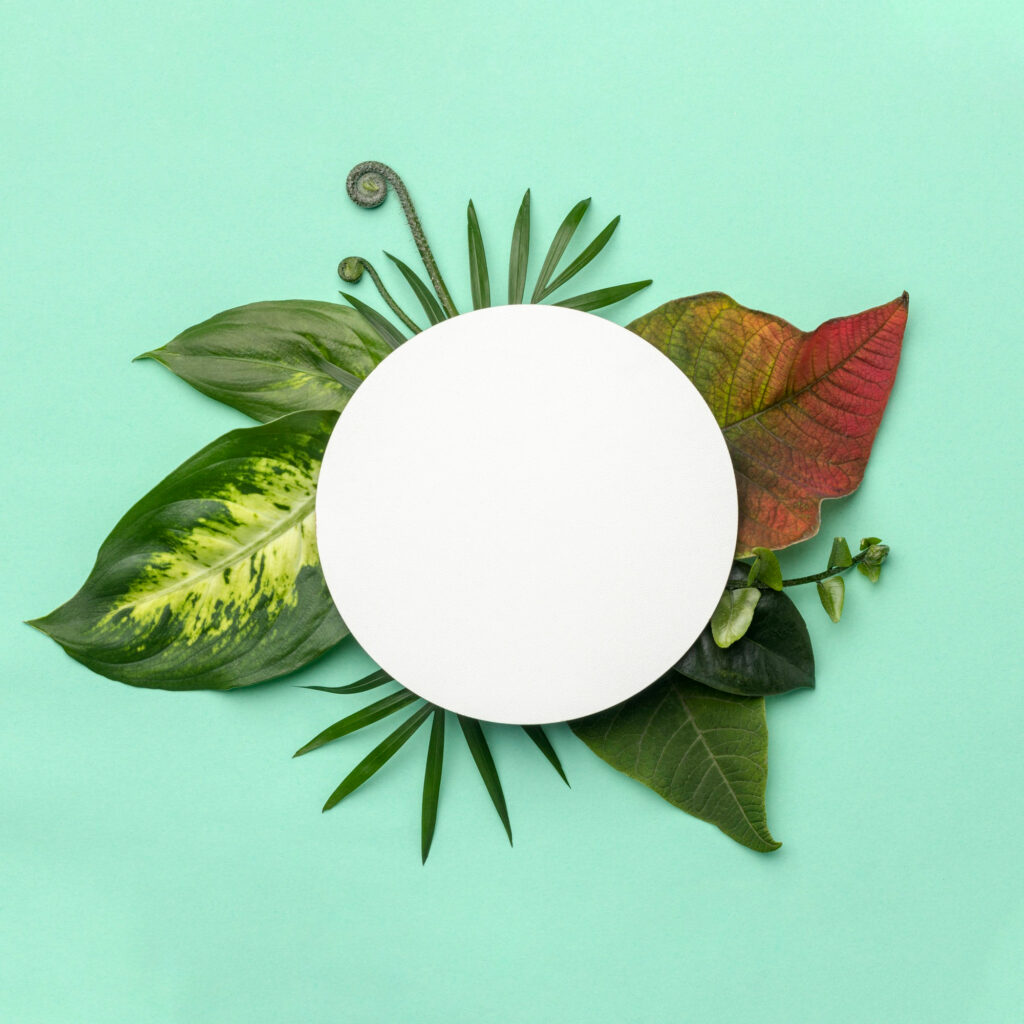
Traditional design often leans towards sharp lines and geometric shapes. In contrast, biophilic design embraces organic forms inspired by nature’s fluid contours. Curved furniture resembling riverbanks or light fixtures mimicking the gentle sway of leaves evokes a sense of movement and life. Furthermore, biomimicry, a concept borrowed from nature, prompts designers to emulate nature’s intricate patterns, weaving an extra layer of fascination into the interior landscape.
5. Natural Light and Airflow

Natural light is a cornerstone of biophilic design, acknowledged for its profound impact on our well-being. Large windows, strategically positioned, channel sunlight deep into interiors, eliminating the confines of closed spaces. Fresh air is equally pivotal cross-ventilation systems mimic nature’s breeze, creating a healthier indoor climate. The boundaries between indoors and outdoors blur with the integration of sliding glass doors and open layouts, ensuring a harmonious exchange of light and air.
6. Water Features Inside
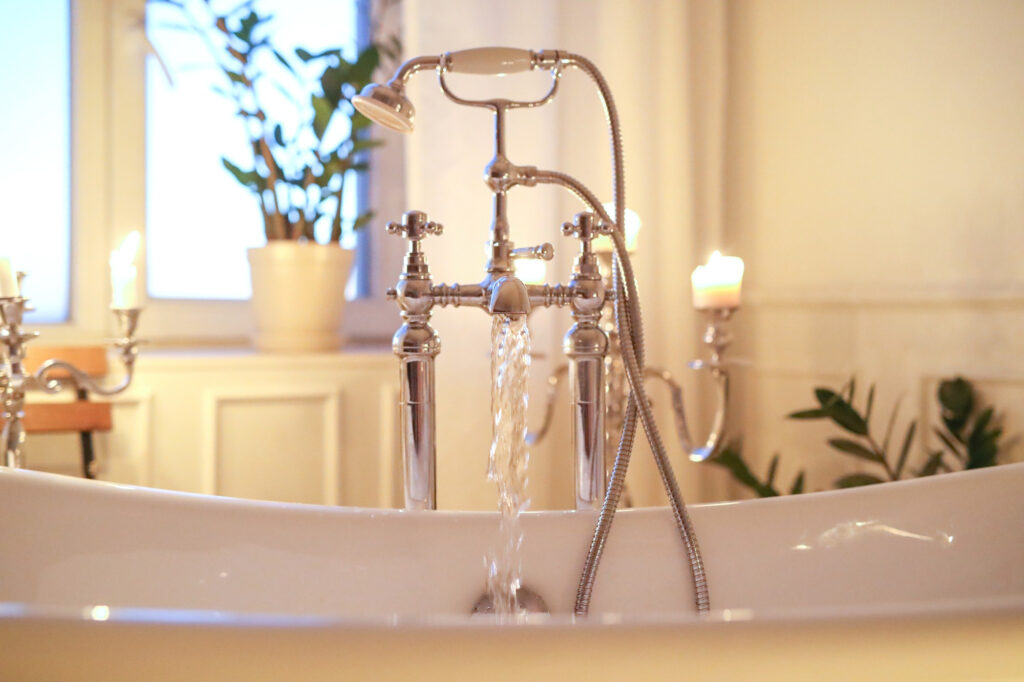
The gentle melody of flowing water holds an enchanting power. The biophilic design captures this magic by inviting water features indoors. Indoor fountains and water walls act as artistic installations, engaging both our sense of sight and sound. These watery wonders, while captivating, require meticulous planning to ensure that they remain functional and low-maintenance, preserving their soothing influence.
Biophilia in Different Settings
1. Residential Spaces
In the realm of residential design, biophilia transforms ordinary spaces into havens of tranquility. Bedrooms take on the aura of serene forest clearings, where natural hues and textures envelop occupants in a cocoon of calm. Kitchens become vibrant ecosystems, with herb gardens gracing countertops and earthy tones reminiscent of fertile soil. Bathrooms embrace the serenity of spa retreats, where pebble-textured flooring and vertical gardens offer a sense of rejuvenation in the comfort of home.
2. Work Environments
The corporate landscape, often associated with stress, finds solace in biophilic design. Office spaces are no longer sterile; they are transformed into thriving work sanctuaries. The strategic placement of indoor plants among workstations not only enhances air quality but also boosts productivity and employee morale. Skylights and expansive windows immerse workers in natural light, fostering a connection to the outdoors even within four walls. Boardrooms and break rooms are adorned with natural materials and living walls, creating environments conducive to collaboration and relaxation.
3. Healthcare and Wellness Centers

The healing power of biophilic design is evident in healthcare and wellness settings. Waiting areas no longer evoke tension; instead, they exude serenity with cascading water features and abundant greenery. Treatment rooms are adorned with nature-inspired artwork, promoting a sense of calm in patients. Therapeutic gardens provide spaces for reflection and recovery, harnessing nature’s therapeutic effects to aid in the healing process.
Biophilic Design DIY: Bringing Nature Home
Embracing biophilic design doesn’t require a complete architectural overhaul. It can be introduced gradually, tailored to your space and budget. Begin by assessing the potential of your space—evaluate windows, lighting conditions, and available surfaces. Incorporating indoor plants, even in the form of small potted herbs, is an accessible starting point. For those conscious of budget constraints, nature-inspired décor, and DIY projects, such as crafting a mural or assembling a miniature indoor garden, can make a significant impact. Designating a sensory corner—a cozy nook adorned with natural textures, soft lighting, and perhaps a small water feature—provides a personal retreat within your abode.
Challenges and Future Directions
The path to fully integrating biophilic design into our urban fabric is not without its challenges. While the concept holds immense promise, there are practical hurdles that must be navigated to achieve its full potential.
1. Balancing Modern Aesthetics and Nature Preservation
One of the foremost challenges lies in striking a delicate equilibrium between modern architectural aesthetics and the imperative to preserve the authenticity of nature. Biophilic design aims to bring the outdoors in, but in doing so, it must ensure that the natural elements seamlessly complement the built environment rather than overpower or clash with it. Achieving this harmony requires a thorough understanding of architectural principles, the cultural context, and the ecological impact.
2. Overcoming Urban Constraints
The very essence of biophilic design—the integration of nature—faces constraints in densely populated urban areas. Limited space, high land costs, and existing infrastructures often pose obstacles to creating the green havens envisioned by biophilic design. Overcoming these constraints necessitates innovation and out-of-the-box thinking. Vertical gardens, rooftop green spaces, and adaptive reuse of underutilized areas are some strategies that have emerged to navigate these challenges.
3. Technological Innovations and Sustainability
As technology continues to advance, biophilic design has an opportunity to harness these innovations to further its goals. Smart systems that regulate lighting, temperature, and irrigation in response to real-time data can enhance the effectiveness of biophilic elements. However, with this technological integration comes a responsibility to maintain the core principles of sustainability. Ensuring that technological advancements are aligned with eco-friendly practices remains a critical consideration.
4. Establishing Biophilic Design as a Norm
While biophilic design has gained recognition and momentum, it is not yet universally embraced. Convincing stakeholders, from architects and designers to homeowners and developers, of its value requires showcasing its tangible benefits. This involves not only highlighting its aesthetic appeal but also its impact on well-being, productivity, and environmental sustainability. As society becomes increasingly conscious of these factors, biophilic design is expected to transition from a niche concept to a standard practice.
5. Cultivating Public Awareness and Education
Creating a paradigm shift in design and construction practices requires raising public awareness about biophilic design’s significance. Education about the philosophy, principles, and benefits of biophilic design needs to be disseminated across various sectors. By empowering individuals with the knowledge to appreciate and demand such designs, a groundswell of support can be generated that influences both public and private projects.
6. Navigating Cultural Diversity
The universal appeal of biophilia notwithstanding, cultural diversity adds a layer of complexity to its application. Different cultures have distinct relationships with nature, and preferences for design elements can vary significantly. Sensitivity to these differences is crucial to ensure that biophilic design resonates with and respects the cultural context in which it is implemented.
The Road Ahead: Biophilic Design as a Sustainable Norm

Overcoming these challenges represents not only an opportunity to enhance the quality of our living spaces but also a significant step toward a more sustainable and harmonious future. As the world grapples with environmental concerns and the need for well-being, biophilic design offers a holistic approach that can address multiple challenges simultaneously. Through collaboration, innovation, and a shared commitment to bridging the gap between nature and the built environment, biophilic design has the potential to become the new norm—a norm that prioritizes the well-being of people and the planet alike.
Affiliate Recommendations to Infuse Your Space with Biophilic Design Magic
1. Elevate with Indoor Plants and Planters
Enhancing your interiors with lush greenery is a cornerstone of biophilic design. Consider introducing a variety of indoor plants, from resilient succulents to elegant ferns. To complement your green companions, explore a selection of planters and pots that effortlessly blend with your décor.
2. Textured Delights: Natural Home Décor
Infuse your living spaces with the raw beauty of nature through thoughtfully chosen natural home décor. From earthy-toned throw pillows to rugs crafted from natural fibers, these elements evoke a tactile connection with the outdoors.
3. Walls that Breathe: Biophilic Art and Murals
Invite nature indoors through captivating biophilic wall art and murals inspired by landscapes, botanicals, and more. Such art not only enriches your space but also transports you to serene natural settings.
4. DIY Green Oasis: Vertical Green Wall Kits
Transform your walls into living canvases with DIY green wall kits. These kits enable you to create your own vertical gardens, adding a touch of biophilia to your space.
5. Sustainable Furniture: Natural Textured Furnishings
Furnish your space with pieces that embody the essence of biophilic design. Choose from an array of sustainable furniture crafted from materials like bamboo, rattan, and reclaimed wood.
6. Illuminate Naturally: Eco-Friendly Lighting
Light up your space with fixtures that harmonize with nature. Explore Sustainable lighting options made from eco-friendly materials like wood and bamboo, creating a warm and inviting ambiance.
7. Nurturing Nature: Plant Care Essentials
Caring for your indoor garden is an essential part of biophilic living. Discover watering cans, misters, and plant care tools that help you cultivate a thriving indoor oasis.
8. Dive into Wisdom: Biophilic Design Books
Deepen your understanding of biophilic design books with insights that delve into their philosophy and application. Immerse yourself in the knowledge that empowers your nature-infused journey.
9. Serenity in Scents: Natural Home Fragrances
Complete the sensory experience with natural home fragrances that evoke the great outdoors. Choose from organic candles, diffusers, and incense that infuse your space with calming scents.
Embracing Nature's Embrace: The Transformative Power of Biophilic Design
In a world dominated by artificial constructs and technological marvels, biophilic design emerges as a bridge between our primal connection to nature and our modern existence. It is not merely a trend but a testament to the symbiotic relationship between humanity and the environment. Through the deliberate incorporation of nature-inspired elements, we have the power to transform our interiors into spaces that resonate with our souls. The transformative potential of biophilic design extends beyond aesthetics—it touches our senses, our well-being, and our relationship with the world around us.
FAQs : Biophilic Design
1Q. What is the concept of biophilic design?
Biophilic design is a design philosophy that seeks to connect people to nature through the intentional incorporation of natural elements and patterns into the built environment. The aim is to create spaces that not only look attractive but also enhance well-being, productivity, and sustainability by taking advantage of our innate affinity with nature. In short, it is about bringing the outdoor environment indoors to create a healthier and more harmonious living and working space.
2Q. What are the biophilic elements of design?
Biophilic design includes various elements that mimic or generate nature within the built environment. Some key biophilic design elements include creating spaces with natural materials, indoor plants, natural lighting, water features, nature-inspired artwork, organic shapes, and outdoor views. These elements aim to foster a deeper connection between people and nature, promoting well-being and sustainability in architectural and interior design.
3Q. What are 5 benefits of biophilic design?
- Better health: Biophilic spaces have been shown to reduce stress and anxiety and improve mood, which leads to better mental health.
- Increased Productivity: Incorporating natural elements into workplaces can boost creativity and productivity among employees.
- Improved air quality: Indoor plants used in biophilic designs act as natural air purifiers, enhancing overall indoor air quality.
- Energy Efficiency: Maximizing natural light and ventilation reduces the need for artificial lighting and heating/cooling, thereby saving energy.
- Sustainability: By using sustainable materials and practices, Biophilic Design promotes eco-friendly living and construction, contributing to a healthier planet.

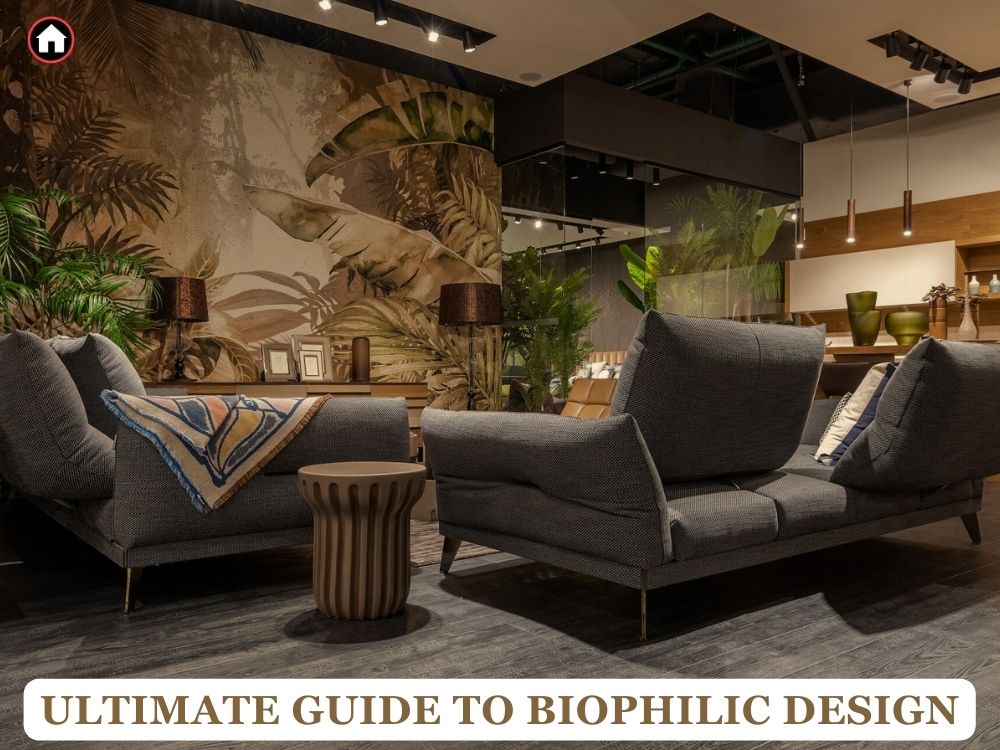
[…] You may also like: The Ultimate Guide to Biophilic Design […]